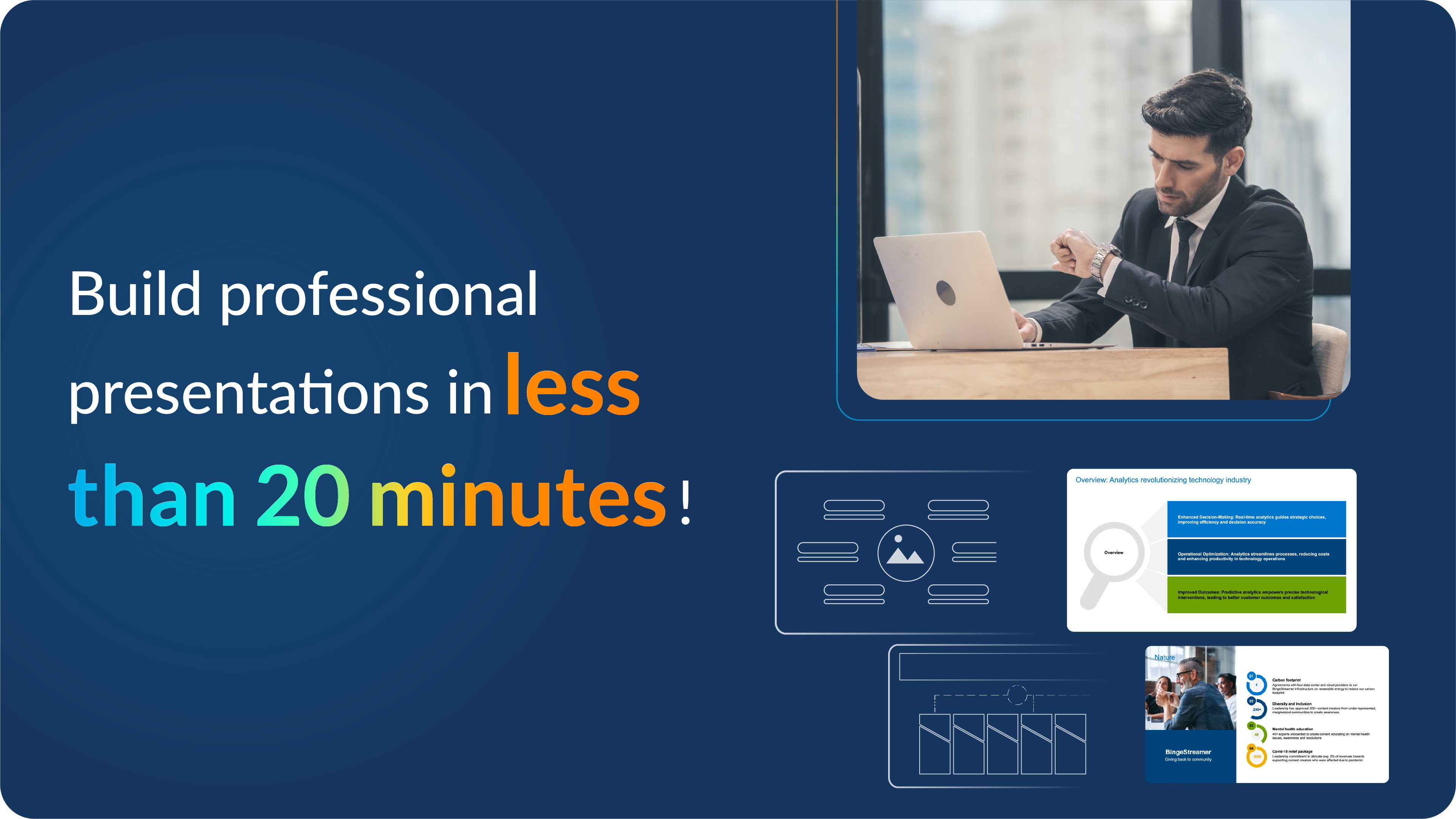Effective communication in the workplace - The importance, types & tips to improve

Have you ever wondered what the first thing is to get any work done? Be it professionally at work or in a personal set-up at home? Think about it.
It's all about communication—letting someone know your ideas, thoughts, and what you want to do, right? So, it is safe to say that communication forms the basis of any work. In simplest terms, communication is the exchange of information between people and organizations.
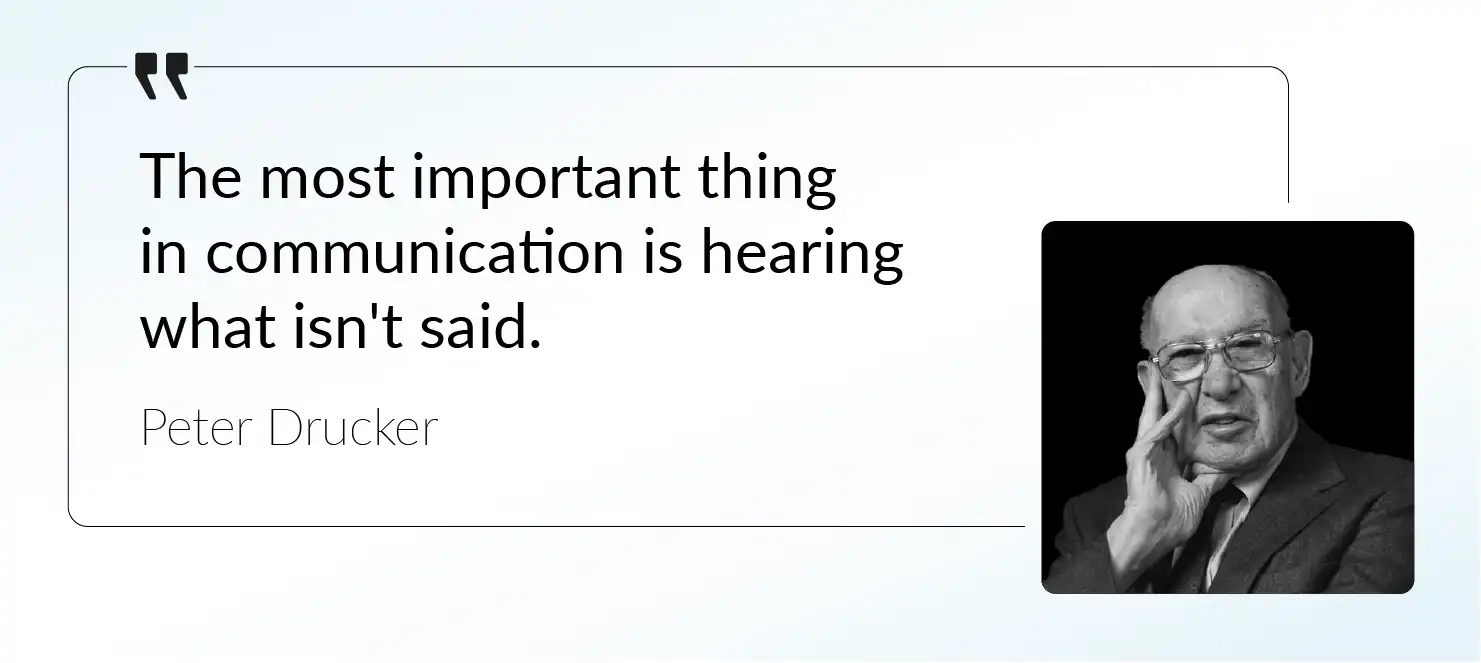
Effective communication is important in the workplace and cannot be emphasized enough in the dynamic and ever-evolving professional landscape. For any successful organization, proficient communication strategies foster an environment of transparency, trust, and mutual respect among employees and help enhance overall productivity and job satisfaction.
Importance of effective communication in the workplace
Workplace communication is much more complex than one may think. It isn't just about going to work, assigning tasks, and completing your projects on time; it's much more complex. While it may seem easy, there are several layers to good communication in the workplace.
Effective workplace communication enhances employee job satisfaction and well-being, improves team efficiency, streamlines conflict resolution, enhances problem-solving abilities, and, ultimately, results in financial success for the organization. On the other hand, poor communication with peers and teams can lead to friction, which might have a cascading effect on work. Here are some characteristics of good communication:
- Clarity and conciseness: Formal communication should be clear and concise, eliminating any possibility of misunderstanding. It is essential to convey messages straightforwardly, avoiding jargon and overcomplication. For example, senior management and executives prefer crisp, clear communication in important meetings.
- Active listening: Communication is not just about talking; it’s equally about listening. Active listening involves fully concentrating on what is being said rather than passively hearing the message. This two-way communication practice fosters a greater understanding and promotes a more inclusive work environment.
- Positive nonverbal communication: A significant part of communication is nonverbal. Body language, eye contact, and tone of voice are crucial in conveying messages and emotions. Being mindful of these can greatly improve workplace communication.
- Feedback: Open and constructive feedback is vital to workplace communication. It aids in personal development, contributes to the advancement of team objectives, and helps build the team's communication skills.
There are numerous other forms of communication, such as virtual communication, written communication, and much more, but we will focus on communication in a workplace.
Types of workplace communications
Workplace communication is vital to organizational success and encompasses various forms, each serving different purposes yet collectively contributing to a cohesive and productive environment. Understanding these types can help choose the most effective way to convey messages, share information, and facilitate dialogue among team members. Here are the common types of communication:
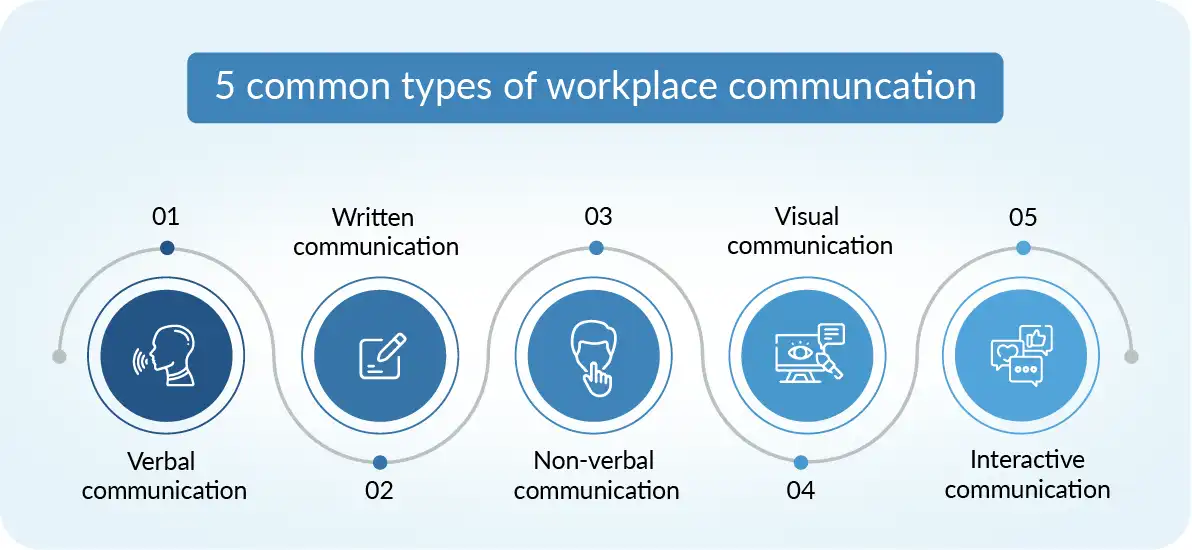
1. Verbal communication: This includes face-to-face conversations, team meetings, presentations, telephonic talks, and video conferencing. Verbal communication is essential for explaining complex ideas, providing immediate feedback, and building personal connections. Effective presentations, for instance, are a form of verbal communication that is key to engaging team members, fostering collaboration, and driving organizational success.
2. Written communication: This comprises emails, reports, letters, memos, and instant messaging. It's crucial for documenting information, providing detailed instructions, and ensuring a record of communications. Written communication is preferred for official notices and when clarity and permanence are needed.
3. Non-verbal communication: This involves body language, facial expressions, gestures, tone of voice, and visual elements such as charts and imagery used in presentations. Non-verbal cues can significantly influence how verbal and written communications are interpreted, creating a lasting impression that enhances comprehension and retention.
4. Visual communication: This type of communication uses visual aids like graphs, charts, diagrams, and videos to convey information. It's particularly effective in breaking down complex information into easily digestible segments, ensuring understanding key concepts, and facilitating improved decision-making processes.
5. Interactive communication: This dynamic form encourages active participation and dialogue, such as brainstorming sessions, workshops, and interactive presentations. It creates a vibrant work environment by welcoming questions and discussions, sparking thought-provoking conversations, leading to collective problem-solving, and fostering innovative ideas.
Understanding and leveraging the strengths of each communication type can significantly impact an organization's ability to convey messages effectively, align team efforts, enhance productivity, and achieve strategic goals.
Pro tip: Use communication tools like Google Workspace, Slack, Trello, etc., to help improve workplace interactions.
Organizations with poor workplace communication have experienced a decline in productivity and efficiency, eventually leading to their downfall. For example, a leading mobile phone maker struggled due to communication issues in the workplace and could never recover its industry market share.
Tips for improving communication at the workplace
Building good communication strategies is crucial in today's competitive business landscape and helps build effective teams in the world. It's also crucial for individuals to develop communication skills in the workplace to improve their effectiveness in conveying content, building credibility, and driving positive organizational change.
Communication is important, and effective formal workplace communication forms the basis of every prosperous organization. Here are some tips for effective communication:
- Hold regular meetings and interactions: Frequent in-person and virtual meetings align team goals and facilitate employees' sense of belonging and contribution. They provide a platform for exchanging ideas, addressing concerns, and promoting collaboration and communication.
- Utilize technology: Leveraging digital communication platforms and tools facilitates seamless communication and collaboration across distances and time zones. Use different communication channels as and when required. It allows for the efficient exchange of information, enhances connectivity, and promotes effective teamwork in a globalized and interconnected work environment.
- Encourage open dialogue: Creating an inclusive environment where team members can freely voice their ideas and concerns fosters innovation and strengthens the team's unity. Emphasizing open dialogue and informal communication encourages diverse perspectives, creativity, and problem-solving, contributing to a dynamic and adaptive organizational culture.
- Practice empathy: A communication culture grounded in empathy is essential for nurturing a supportive and harmonious work environment. Leaders need to go the extra mile to understand their employees. For example, nonverbal communication in the workplace, like changes in an employee's tone, facial expressions, and/or subtle words seeking support, can help them improve their communication and work. It may involve considering the emotions and perspectives of individuals to promote understanding and build strong interpersonal relationships within the organization.
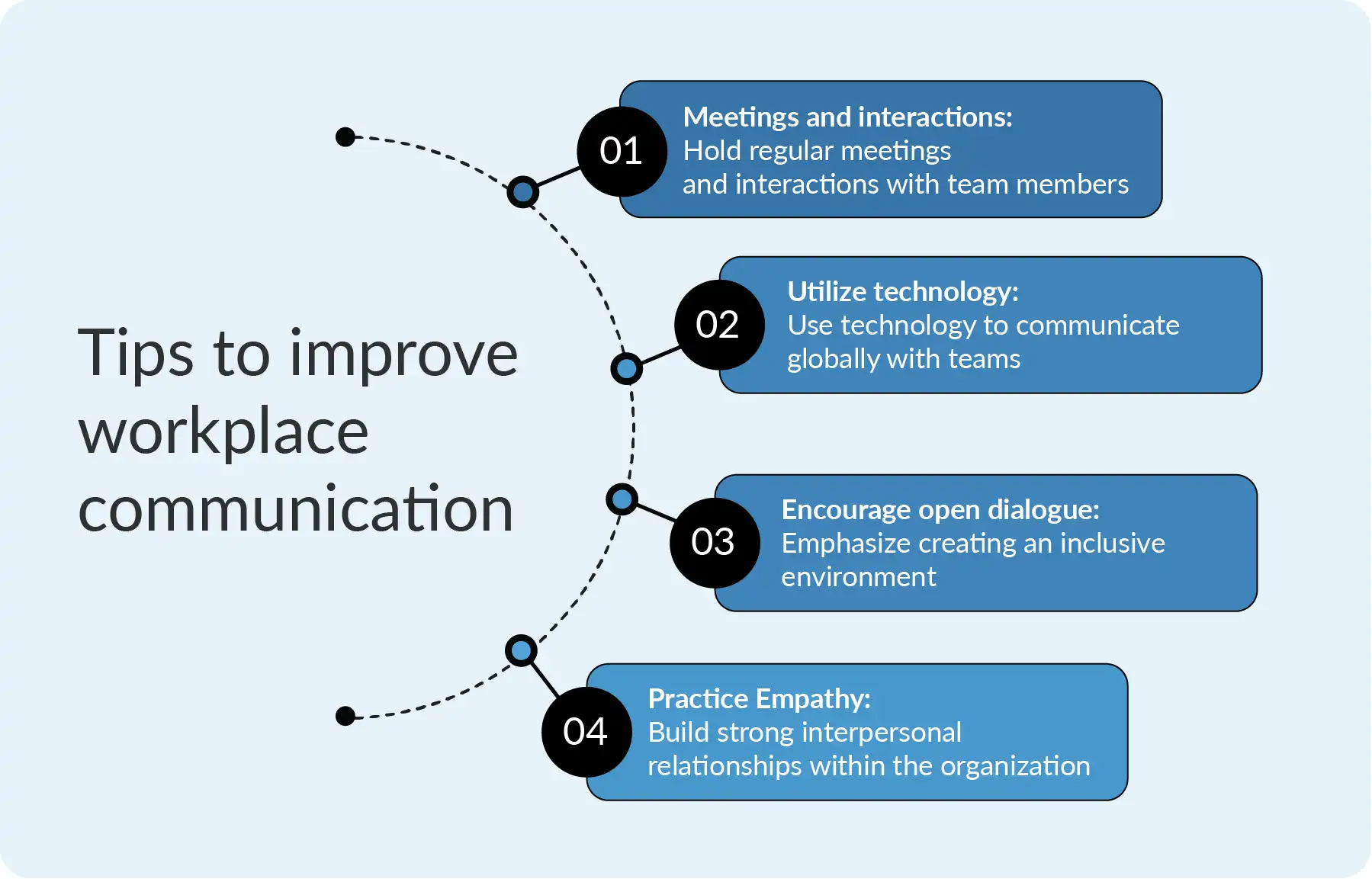
Role of presentations to improve communication in the workplace
Effective presentations play a crucial role in enhancing workplace communication skills. They help in conveying ideas, strategies, and objectives clearly and persuasively. When crafted and delivered with attention to detail, presentations can significantly improve information dissemination, decision-making processes, and employee engagement within an organization.
Presentation skills extend beyond merely putting together slides and speaking in front of an audience. Communication in the workplace refers to the ability to design content that captures and retains the audience's attention. It also means that team members must identify key communication points to present effectively and inspire action. Here are some ways in which good presentations can help enhance your communication at the workplace:
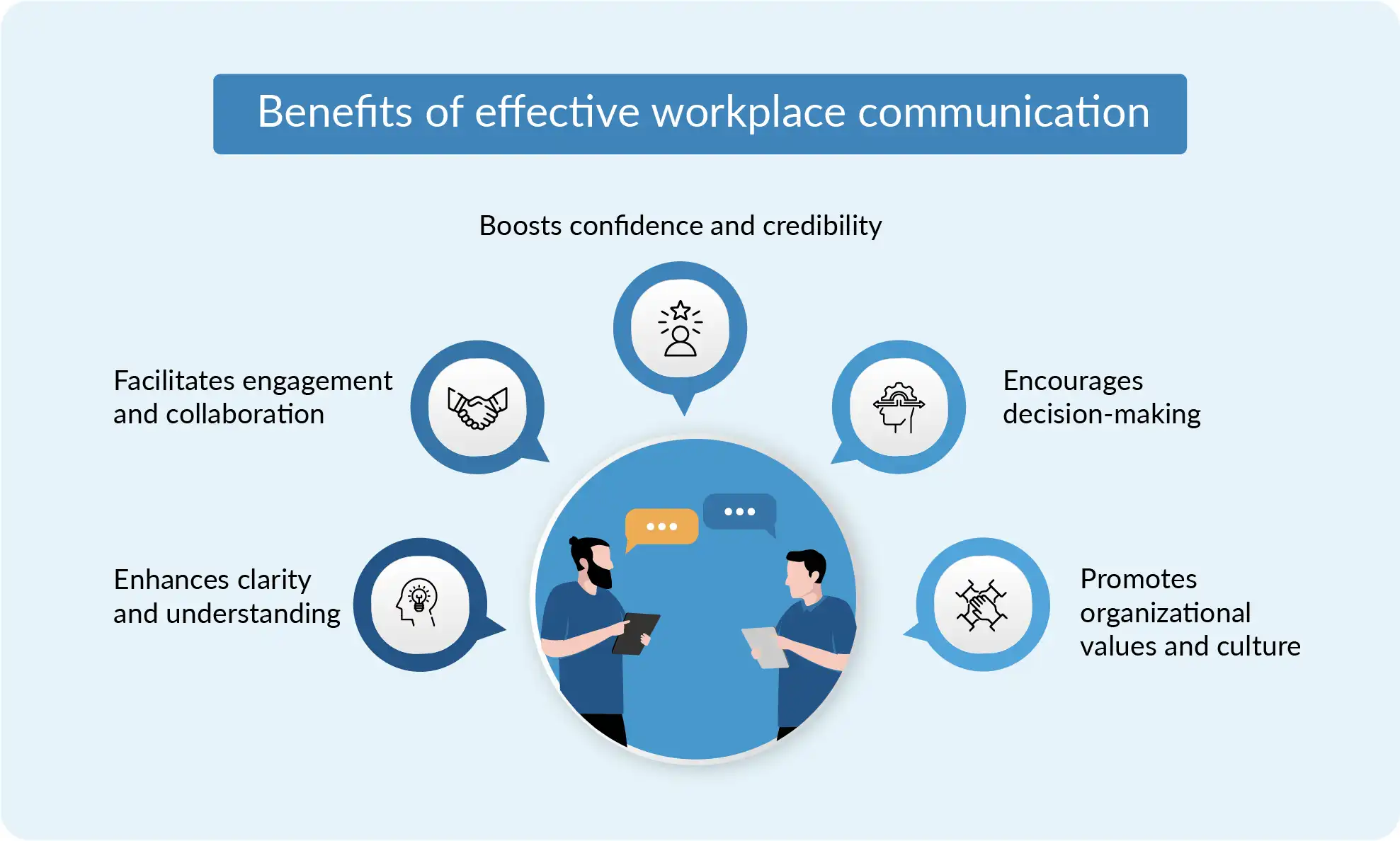
Enhancing clarity and understanding
A well-structured presentation breaks down complex information into understandable chunks, making it easier for the audience to grasp key concepts and details. You can enhance comprehension and retention by utilizing visual aids such as charts, graphs, and imagery, enabling team members to understand the subject matter clearly.
Facilitating engagement and collaboration
Interactive presentations encouraging questions and discussions can foster a more engaged and collaborative work environment. By inviting feedback and involvement, presenters can create a dynamic exchange of ideas, encouraging teamwork and collective problem-solving.
Boosting confidence and credibility
Practical presentation skills showcase the presenter's knowledge and competence, building credibility within the organization. A confident delivery, backed by well-researched and organized content, can influence and persuade, leading to more effective implementation of projects, policies, and strategies.
Encouraging decision-making
Presentations are often used to present data and analysis that support business decisions. By articulating recommendations and outlining the benefits and risks, effective presentations can guide management and teams toward informed choices and actions, streamlining organizational processes.
Promoting organizational values and culture
Presentations provide an opportunity to reinforce the organization's values, vision, and goals, aligning team efforts with the overall strategic direction. By consistently communicating these elements in presentations, organizations can strengthen their culture and communication between employees and boost employee morale and loyalty.
Presentations are vital to effective communication at work. Presenting to an audience offers a versatile platform for sharing information, inspiring action, and fostering a cohesive and informed organizational environment. Developing presentation skills across all levels of the organization can lead to enhanced productivity, innovation, and success.
FAQs on effective communication in the workplace
1. What are the benefits of effective communication in the workplace?
Effective communication is important in the workplace because it enhances collaboration, boosts morale, and increases efficiency. It fosters a positive work environment by promoting transparency, trust, and mutual respect, ultimately leading to higher productivity and job satisfaction.
2. How can one communicate effectively across different workplace communication channels?
To communicate effectively, it is crucial to understand the various workplace communication channels, such as verbal, written, and nonverbal methods. Tailoring your communication style to fit the context and audience, whether through emails, meetings, or presentations, ensures clarity and understanding.
3. What are some examples of poor communication in the workplace, and how can they be avoided?
Poor communication in the workplace can lead to misunderstandings, decreased morale, and inefficiency. Examples include unclear instructions, lack of feedback, and ineffective communication of goals. These can be avoided by practicing strong communication skills, active listening, and encouraging open dialogue.
4. Why is nonverbal communication important, and how does it impact workplace interactions?
Nonverbal communication, like body language and facial expressions, plays a significant role in conveying emotions and intentions. It can enhance or detract from verbal messages, affecting how information is received and interpreted. Being mindful of nonverbal cues can improve workplace interactions and understanding.
5. What is upward communication, and why is it essential for organizational success?
Upward communication involves sharing information, feedback, or suggestions from lower-level employees to higher management. It is essential for organizational success because it fosters a culture of openness and innovation, allowing leadership to make informed decisions based on diverse perspectives within the organization.
How can Prezent help enhance your workplace communication?
Communication in the workplace involves coordination with various stakeholders and teams. With improved technology, communication has increased globally, yet it must also be streamlined for business efficiency.
Prezent helps teams take their communication skills to the next level. Developing good communication skills at work is not a humongous task now. With Prezent, you can be confident that your presentations will effectively reach and engage your audience. Here are some of the features you can explore to make your communication at the workplace stand out:
- Communication Fingerprint: This feature lets you gain insights into your audience's preferences and tailor your content to resonate with them deeply. This personalized approach to communication goes beyond the general norms to create a genuine connection and keep your audience engaged throughout your presentation. This makes your presentation more engaging and leaves a lasting impression on your audience.
- Courses: Prezent offers extensive learning courses designed to improve your communication skills. These courses are thoughtfully curated, breaking down each section into bite-sized videos that are easy to understand, retain, and follow up on in your free time.
- Zenith Learning Workshops: Learn business communication skills through interactive workshops led by industry experts. These workshops are tailored to different skill levels and interests. You can participate in live, interactive sessions and access valuable workshop materials, resources, and ongoing support to continue your learning journey.
Companies with effective communication always have an edge over others, and we invite you to request a free demonstration from our experts at Prezent. You can also explore the platform with a 14-day free trial. This hands-on experience will truly showcase Prezent's potential to transform the state of global workplace communication.


.avif)








